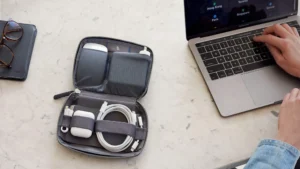The technology industry is often criticized for making people feel disconnected. People are often accused of scrolling on their phones rather than talking to one another or of losing touch with reality in favor of the digital world. These concerns are not without some validity, but it is also true that technology can play a vital role in maintaining and strengthening our relationships both locally and globally. These tools, from the smartphones we carry in our pockets to social media sites we visit, have changed the way we communicate and keep in touch.
This article will examine the many ways that common technologies keep us connected. We will examine how different platforms and devices facilitate communication, help bridge geographical distances, and even build new communities. You’ll be able to see the positive impact that technology has on social life by the end.
Smartphones and Mobile Communication
Smartphones are the most important piece of technology for staying connected. These powerful devices offer much more than a phone; they’re our main link to the digital universe. You can use a smartphone to call, send a text, email, or video chat with anyone at any time, anywhere. It’s easy to stay in touch with family and friends, no matter where you are. Video calls can be used to share funny moments, and quick texts can help you feel as if you are in the same room as a loved one who is far away. Mobile communication has broken the barrier of distance and allowed for instantaneous, spontaneous connections that were previously impossible.
Social Media Platforms
Facebook, Instagram, and X (formerly Twitter), social media platforms, have changed the way we share our lives. The social media platforms act as digital scrapbooks, allowing users to share updates, photos, and videos with their friends and family. It’s a passive, continuous way to stay in touch with each other. You can wish someone happy birthday, celebrate a friend getting a new job, or see photos of a cousin on vacation. Social media helps us to reconnect with old friendships and create communities around shared interests. The result gives a feeling of belonging that is not limited by physical location.
Email for Professional Networking
Email and professional networking sites such as LinkedIn are vital for our careers. Social media is great for making personal connections, but email and LinkedIn are crucial for building a career. Email is still the cornerstone for professional communication. It allows for detailed and formal correspondence, which can be archived. LinkedIn takes professional networking to the next level. They allow us to maintain our connections with colleagues, discover new job opportunities, and keep up-to-date on industry trends. We can collaborate and grow our careers by maintaining a strong professional network.
Video Conferencing Tools
Zoom, Microsoft Teams, and Google Meet are video conferencing tools that have become household names since the pandemic. But their value extends beyond remote work. Face-to-face communications are now possible anywhere there is an internet connection. These platforms host virtual gatherings for families and friends, allow students to attend class from home, and serve as a venue for online gaming nights. Face-to-face communication is more meaningful and personal than texting or calling.
Messaging Apps
Instant messaging apps such as WhatsApp, Facebook Messenger, and Telegram provide a fast and informal way of chatting with individuals or groups. Many people have switched to these apps due to the extra features they offer, including group chats and voice messages. The group chat feature is particularly useful when coordinating plans, staying in touch with family, or working on small projects with colleagues. These apps are casual and encourage frequent, low-stakes communications that help maintain our daily relationships.
The Internet of Things
The Internet of Things is a network of connected smart devices. They are starting to influence how we stay in touch. Smart photo frames, for example, can receive photos directly from the phone of a loved one, providing a continuous stream of new memories. Smart speakers make it easy to call friends and family hands-free. IoT devices, while still a new area, are creating innovative and creative ways to integrate connectivity into our daily lives and homes.
Building Stronger Digital Bridges
The role of technology in modern life is unquestionable. These tools, from the instant reach of smartphones and messaging applications to the shared experience on social media or the face-to-face feeling of video calls, help us maintain and build relationships over distance. It’s important to keep a healthy screen balance and be aware of how much time we spend on screens, but we also need to appreciate the power of technology to create a sense of community and connection.
FAQs
1. How can technology improve long-distance relationships?
Technology is the lifeline of long-distance relations. Face-to-face communication is possible with video calls using platforms such as Zoom or FaceTime, and messaging apps like WhatsApp allow constant, casual communication. Social media sharing of photos and updates can help partners feel closer to each other, as they are more aware of their daily lives.
2. Can social media make you feel more connected to others?
Social media, when used with mindfulness, can increase feelings of connection. You can keep in touch with friends and family from all over the world, share life’s important events, and join communities that share your interests. You can feel like you’re part of a bigger social network even if you are physically alone.
3. What’s the difference between texting and messaging apps?
The messaging apps work over the Internet and provide more features than SMS texting. There are group chats and read receipts as well as end-to-end security encryption and the ability to send documents and photos without being restricted by cellular networks.
4. What are the downsides of using technology to stay in touch?
Technology has many advantages, but it also comes with some downsides. These include the need to always be available, the potential for miscommunication via text, and the feeling of being more isolated when online interactions take the place of real-life interactions. It’s important to achieve a balance.
5. How can I feel more connected with my family using technology?
Set up a group chat for your family on an app such as WhatsApp to share photos and daily updates. Plan regular video calls with your family to catch up. Consider a digital photo frame shared by the family that can be updated remotely or a playlist created in collaboration on a streaming music service.




